Precious Metals Investing FAQs
What is Money? What are its Characteristics?
Money is a medium of exchange used by humans to facilitate the buying and selling of goods and services. Before the advent of money, humans relied on bartering, which was inefficient and required a double coincidence of needs in order for a transaction to successfully occur. The advent of money enabled societies to become much more prosperous and sophisticated than was possible under the barter system alone.
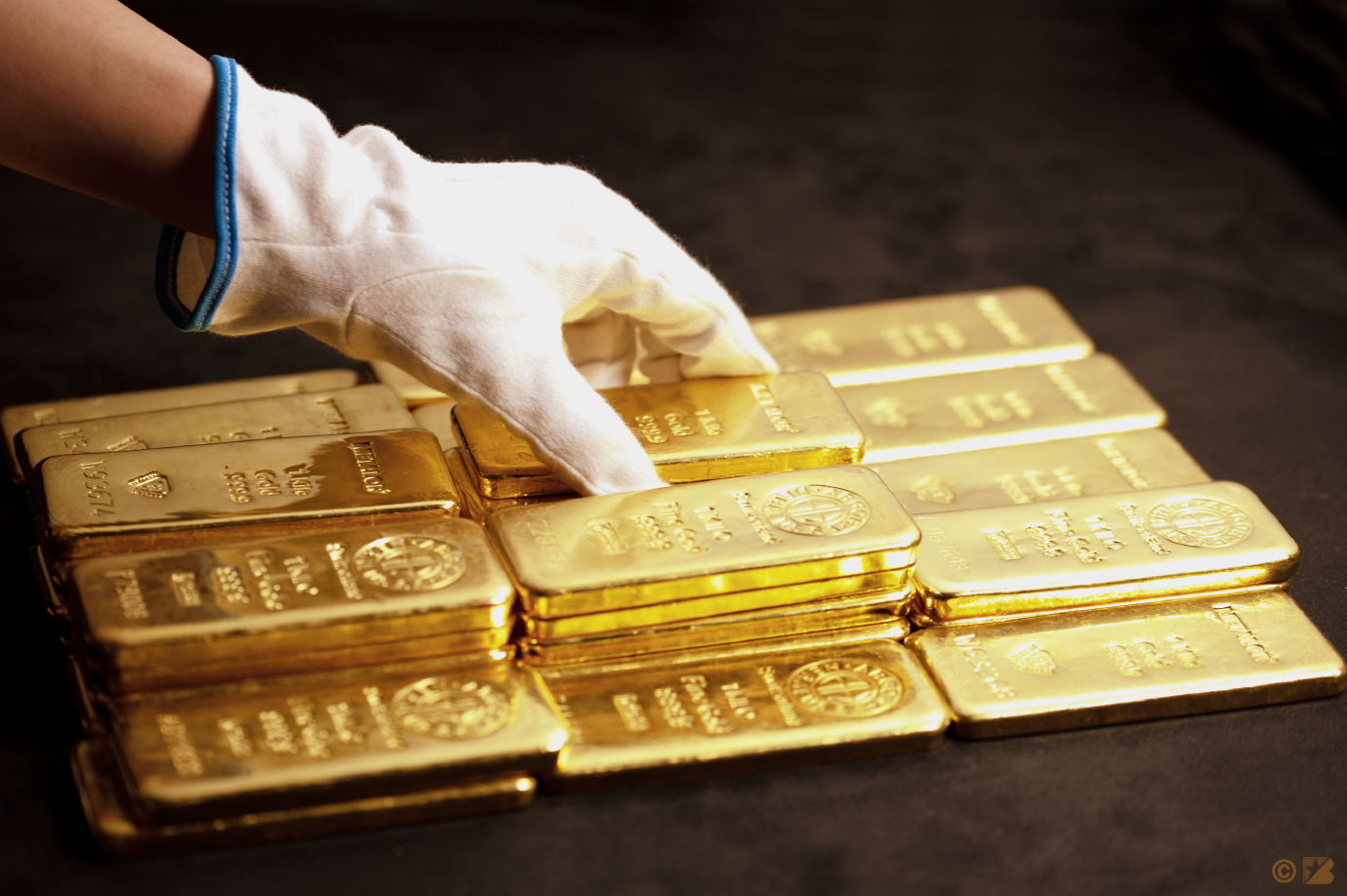
Money has the following functions:
- It can be used as a medium of exchange in transactions
- It is a store of value that allows the preservation of wealth
- It acts as a unit of account for transactions and valuations
- It provides a standard of deferred payment such as allowing a debt to be valued or paying for goods and services at some point in the future
Furthermore, money has the following characteristics:
- It must be durable
- It must be easily divided into various denominations and units
- It must have inherent value
- It must be scarce to keep its value high
- It must be fungible (i.e., easy to substitute one unit for another)
- It must be widely accepted
- It must be portable
- It must be difficult to counterfeit
Unfortunately, fiat or paper currencies such as the U.S. dollar, euro, and Japanese yen are not good forms of money due to their lack of scarcity, which is the result of their respective issuers’ willingness to devalue those currencies by creating many more units of those currencies. Physical gold and silver, on the other hand, have been used as money by humans for six-thousand years and have a relatively fixed supply, which helps to keep their purchasing power stable indefinitely.
Are Gold & Silver Considered Money?
Yes, they sure are! And they’re the best form of money and have stood the test of time after being used for thousands of years by societies around the world. They have also been used as backing for monetary systems such as the gold standard, silver standard, or bimetallic standard (which uses both gold and silver). Gold and silver meet the criteria for money and have proven to perform all of the functions of money. Unlike paper currencies that are devalued as a function of time, gold and silver are superb stores of value that help people preserve their hard-earned wealth over the very long run.
Which Precious Metal Should I Buy?
There are four precious metals that are widely available in bullion form and are popular with investors: gold, silver, platinum, and palladium. Among those four precious metals, gold and silver receive the lion’s share of attention and investment. Each precious metal has its own merits and unique characteristics that are worth discussing including affordability, relative prices, price outlook, volatility, and value for diversifying portfolios.
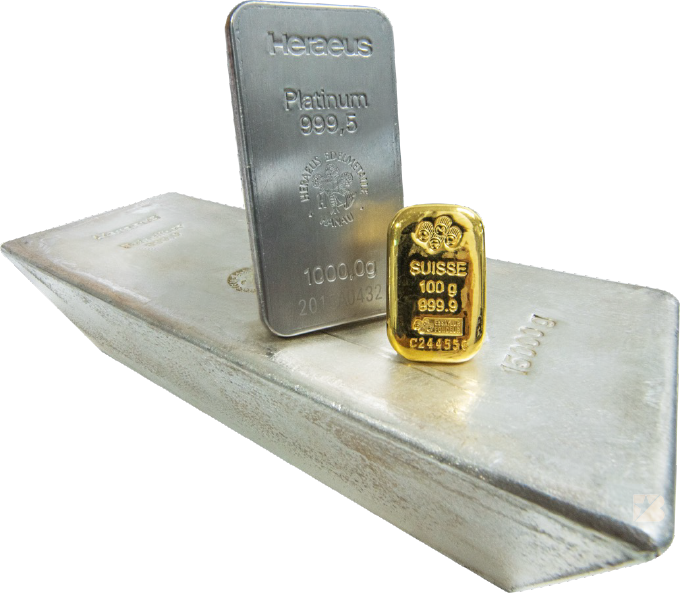
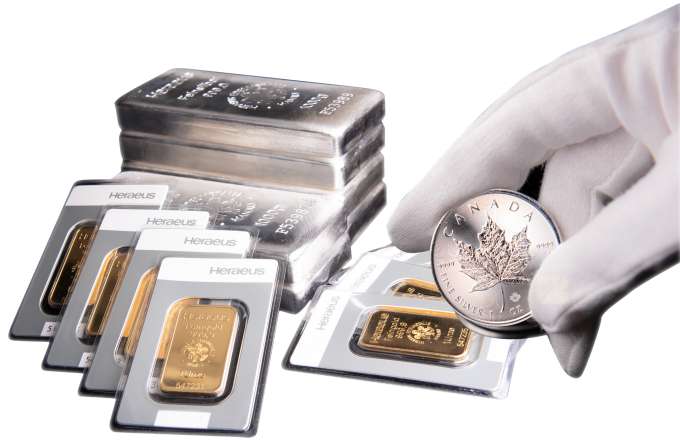
Silver is popular with investors from all walks of life thanks to its much lower cost compared to gold or platinum. At the time of writing, silver is trading at $27.27 per ounce, while gold is trading at $2,320.40, platinum is trading at $912, and palladium is trading at $1,025. At just 1/85th the price of gold, silver has lovingly earned the moniker "the poor man's gold," though it is undoubtedly a valuable precious metal with a bright future and is likely to close the price gap with gold in the years to come, as we’ve discussed in this report.
Precious metals investors often pay attention to price ratios such as the gold-to-silver ratio and the gold-to-platinum ratio, and the direction that those ratios are trending in order to determine whether a particular precious metal is undervalued, fairly valued, or overvalued relative to other precious metals.
Personal preferences also come into play when deciding which precious metal or metals to invest in. Some investors prefer the aesthetics and lower volatility of gold, while others may favor the aesthetics of silver and being able to receive eighty-five 1 oz silver coins instead of a single 1 oz gold coin for the same amount of money, for example. Other investors prefer having a mix of different precious metals. Having a better understanding of one precious metal over another could also be a factor when deciding which precious metal to invest in.
Though all four metals are considered to be precious metals and have some common physical and usage characteristics, they have different supply and demand drivers that often cause their prices to differ quite a bit over time. For example, gold is primarily a monetary metal, silver is a mix between a monetary and an industrial metal, while platinum and palladium are almost exclusively industrial metals. Gold tends to perform better in economic and financial crises, while the industrial precious metals are more sensitive to economic cycles. The relatively low correlation among these precious metals means that investing in an assortment of them has portfolio diversification benefits — especially when they are added to a more traditional portfolio of stocks and bonds.
Click the links to view BullionStar’s assortment of gold, silver, and platinum bullion products
What is Bullion?
Bullion is a term used for bars, ingots, or coins that are made from precious metals and are intended for investment purposes rather than circulation the way common coins such as pennies, dimes, and quarters are. Bullion bars and coins are minted in standard weights including 1 oz, 10 oz, 100 oz, and 1 kilogram, and standard metal purities such as 91.667% gold or 99.99% gold or silver.
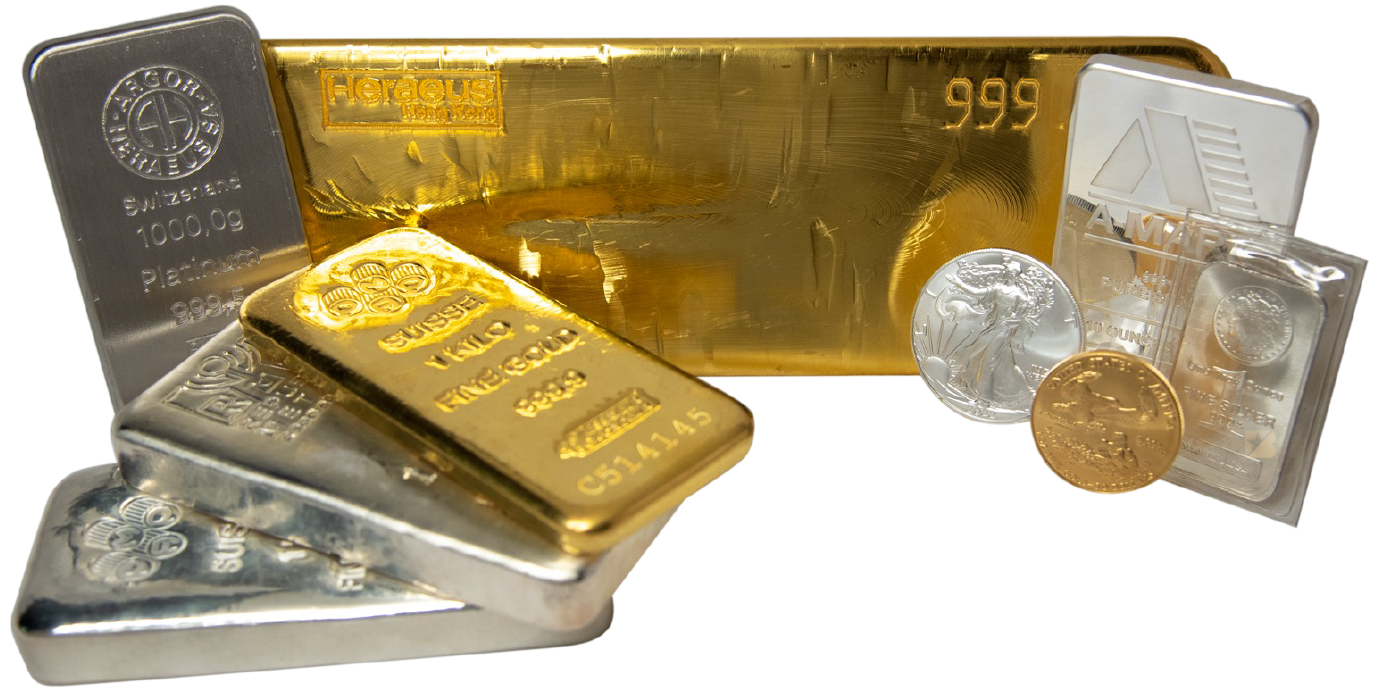
The word bullion has its origins in the old French word “bouillon,” which means “to boil” — a reference to the gold and silver refining process. And, yes, bouillon is the same word used in “bouillon cube” (because soups are boiled)!
Should I Buy Coins or Bars?
One of the first questions that new precious metals investors have is “should I buy bullion coins or bullion bars?” The truth is that there is no right or wrong answer to that question. As long as you are buying high-quality bullion from respected mints or refineries, the decision whether to go with coins or bars is largely a matter of personal preference, and many investors choose to go with a mix of coins and bars. Some investors prefer the designs and history that certain bullion coins have, while others prefer the more utilitarian nature of bullion bars.
In addition to basic characteristics such as weight and metal purity, gold, silver, and platinum bullion bars come in a wide variety of shapes, sizes, finishes, and designs. Some bullion bars have a smooth, minted finish, while others have a more retro-looking cast finish. In addition, some bullion bars come in protective blister packs that double as assay certificates, while others are shipped loose without protective blister packs. While the aesthetic characteristics of bullion bars are largely a matter of personal preference, what is most important is that you purchase investment grade bars that are produced by widely recognized mints or refineries and have a refinery stamp or brand mark on them that will help them to be trusted and authenticated if/when you decide to sell them.
Like bullion bars, bullion coins are also available in a wide variety of different designs and series. What is most important is that you purchase high-purity bullion coins that are produced by respected mints and refineries, which will make it easier if/when you decide to sell them. One perk of bullion coins over bars is that they are usually issued each year, which adds an element of collectability that most bullion bars don’t have.
Weights and sizes are another important consideration when choosing bullion products to invest in. Bullion bars come in a wider range of sizes than bullion bars. For example, bullion bars are available in tiny 1 gram gold pieces all the way up to monster-sized 400 oz gold bars that are worth nearly $1 million. The majority of bullion coins, on the other hands, are minted in 1 oz weights, though popular gold coin series are also available in fractional weights such as 1/10 oz, ¼ oz, and ½ oz. Aside from some limited run bullion coins, most bullion coins aren’t available in sizes larger than 1 oz, so if your goal is to invest in larger bullion pieces, bars are your best option.
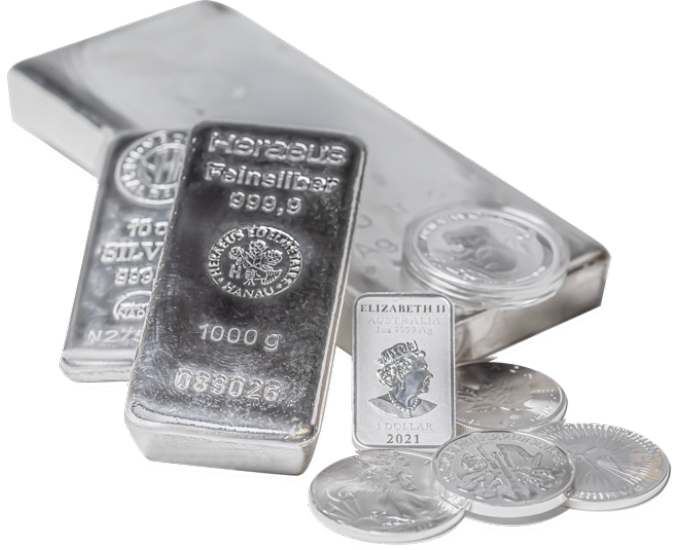
In general, non-numismatic bullion coins and bars track the prices of their respective precious metals almost identically over the long run, so there is very little advantage to buying one or the other if the goal is to take advantage of price appreciation. Like different tools in a toolbox, each type of bullion has a unique purpose and it is advantageous to have an assortment of different types of bullion.
Click the links to view BullionStar’s wide selection of gold coins, gold bars, silver coins, silver bars, platinum coins, and platinum bars.
What’s the Difference Between Minted and Cast Bullion Bars?
Gold and silver bullion bars come in two main varieties: minted and cast. Minted bars, such as the popular 1 oz PAMP Swiss gold bar, have a sleek, modern, highly-polished finish that results from the refiner cutting the metal to precise dimensions and then stamping the design, the refiner’s logo and stamp, weight, purity, and unique serial number (in some cases).
Cast bullion bars, on the other hand, have a rougher finish that results from the pouring of the molten metal into mold and letting it cool and set. Cast bullion bars, such as the 50 Gram PAMP Swiss cast gold bar, have the refiner’s logo and stamp, weight, purity, and unique serial number (in some cases) impressed onto their surface.
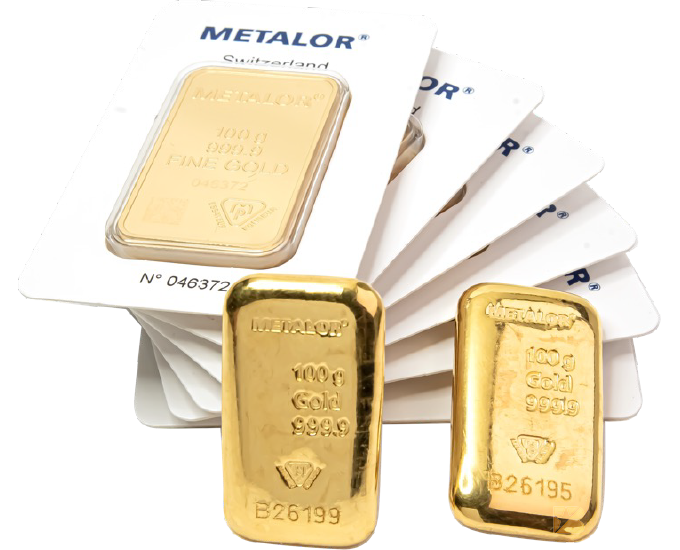
Some investors prefer the sleeker, high-luster finish of minted bullion bars, while others prefer the retro aesthetic of cast bullion bars that look like they belong in a pirate’s treasure chest. There is no right or wrong answer when it comes to the minted vs. cast bullion bar decision; both are solid options and many precious metals investors choose to have a mix of both types of bars.
What is a Precious Metals Refinery? What is a Mint?
New and experienced gold and silver investors alike often ask the question, “what is the difference between a refinery and a mint?”
Mints are typically government-owned facilities that produce both coins for day-to-day circulation as well as valuable precious metal bullion coins that are intended for investment purposes rather than circulation. Some examples of government mints are the United States Mint, the Royal Canadian Mint, the United Kingdom’s Royal Mint, the Austrian Mint, and Australia’s Perth Mint. The word “mint” is both a noun (the actual mint facility) and a verb (the act of minting or manufacturing a coin from metal).
Mints produce coins from blank sheets of metal that are struck and stamped with designs. While some mints are standalone facilities, others are both mints and refineries, but are still called mints. Hybrid mint-refineries, such as the Royal Canadian Mint and the Perth Mint, often produce bullion bars in addition to bullion coins.
Precious metals refineries’ primary function is to turn gold, silver, platinum, and palladium ore and scrap into highly pure bullion bars. While some refineries also produce rounds and legal tender coins, bullion bars are their primary product. Unlike mints, refineries are typically privately-owned facilities. Refineries are also involved in other functions such as re-casting large bullion bars into smaller bars, assaying, precious metals trading, storing precious metals, and producing components that are used in jewelry and high-end watches.
Some of the world’s most famous precious metals refineries are located in Switzerland including PAMP, Valcambi, Metalor, and Argor-Heraeus. Of course, Switzerland doesn’t have a monopoly on precious metals refineries as there are other renowned refineries such as the South Africa’s Rand Refinery, Germany’s Heraeus, and the United Kingdom’s Johnson Matthey. The world’s most respected refineries are included on the prestigious LBMA and LPPM Good Delivery Lists.
What are the Physical Characteristics of Gold?
Gold is one of the most unique materials known to man. It is a hard asset that is highly valuable due to its special chemical and electrical properties, its scarcity, the difficulty and high cost of extracting it from the earth, and the fact that it can’t be created or destroyed.
One of the characteristics of money is having the ability to be easily divided into various denominations and units — something that gold does very well. Money must also be fungible (i.e., easy to substitute one unit for another), which gold certainly is. Gold is also an excellent store of value thanks to its high value-to-weight ratio, portability, and ease of storage. Unlike most other assets, gold has zero counterparty risk since it isn’t someone else’s liability. In addition, gold has no default risk because it isn’t issued by an entity that could default such as a private individual, a corporation, a central bank, or a government.
Gold’s physical characteristics such as malleability (the ability to be rolled into thin sheets) and ductility (the ability to be stretched into thin wire) are highly desirable for industrial and scientific applications. Gold’s high electrical conductivity and complete resistance to all forms of corrosion make it very valuable for electronics applications such as coatings on electrical contacts and as a conductor on printed circuit boards. As a result, a typical desktop computer is estimated to have .2 grams of gold while a typical iPhone has approximately .034 grams of gold. Gold’s corrosion resistance also makes it valuable for dental applications such as fillings, bridges, inlays, and crowns.
What is a Spot Price?
The spot price refers to the current wholesale price that a precious metal, commodity, currency, or another type of asset is trading for in the marketplace for immediate settlement. It’s also known as the cash price and the international price. Gold, silver, and platinum spot prices are typically quoted in U.S. dollars per troy ounce.
Precious metals are traded around the clock during the business week, so their spot price is constantly fluctuating based on transactions that occur across the globe.
Click the links to check the current spot price of gold and silver.
What is a Bullion Price Spread?
When you go to purchase gold, silver, and platinum bullion from a dealer, you’ll notice that there are two prices that are quoted: the bid price and the ask price.
The ask price is also known as the buy price and is the current price that customers must pay in order to purchase that particular coin or bar. The bid price is also known as the offer price and is the current price that the dealer is willing to pay a customer for that particular coin or bar. The ask price is always higher than the bid price, and the difference between the two prices is known as the spread. The spread is typically expressed as a percentage.
For example, a 1 oz American Gold Buffalo Bullion Coin may have an ask price of $2,425.27 and a bid price of $2,284.14, which equates to a 5.82% spread.
What is a Bullion Price Premium?
Gold, silver, and platinum bullion bars and coins in the marketplace are almost always priced higher than the metal’s spot price, and that difference is called a price premium. Premiums are typically expressed as a percentage.
For example, a 1 oz American Gold Buffalo Bullion Coin may have an ask price of $2,418.76 while the spot price of gold is $2,322.80, which equates to a 4.13% premium.
Bullion price premiums are determined by a number of different factors such as:
- The cost of refining, fabrication, and minting that bullion item
- Transportation, distribution, marketing, and wholesaling costs
- Supply and demand for that bullion item
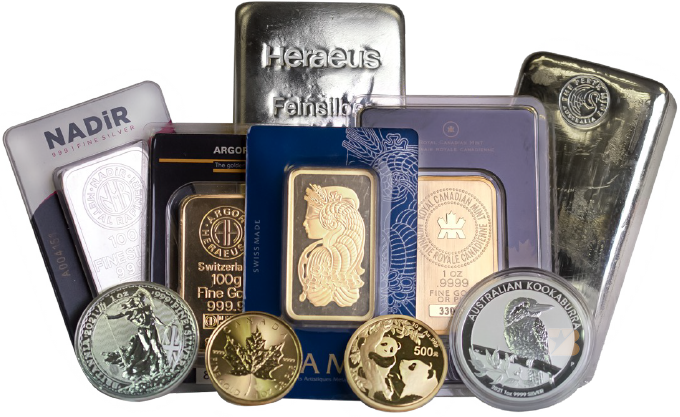
In general, bullion coins typically command higher premiums than bullion bars due to the higher cost of minting coins. In addition, premiums on large bullion bars are usually lower than premiums on smaller bullion bars because the fixed refining costs amount to a smaller percentage of the overall cost of large bullion bars versus smaller bullion bars. If your primary goal is to get the most gold, silver, or platinum for your money, the best option is to buy large bullion bars — the larger the better. Of course, large bullion bars are bulkier and harder to store and transport than smaller bullion products, so it’s a tradeoff.
How Much Gold Exists in the World?
According to the World Gold Council, approximately 212,582 tons of gold has been mined throughout history, of which around two-thirds has been mined since 1950. Due to gold’s incredible resistance to corrosion and destruction, virtually all of that gold is still around and would fit into a surprisingly small cube measuring about 22 meters on each side. Approximately 3,000 tons of gold are mined each year around the world.

What is Above-Ground Gold?
The term “above-ground gold” refers to all gold that has been mined throughout history that is still accounted for. Due to gold’s very high value, it is rarely lost and is often reclaimed through recycling (in the case of gold used for dentistry, electronics, unwanted jewelry, and other practical applications). Above-ground gold is most often held in the form of investment-grade bars and coins, jewelry, and gold used for industrial, technological, and medical applications.
What is Liquidity?
Liquidity is a finance term that refers to how easily a particular asset can be bought or sold. Liquidity is a desirable trait because it allows you to get in or out of an investment quickly and with minimal transaction costs. The most actively traded assets are typically the most liquid. For example, a widely held and traded stock like Microsoft is much more liquid than a thinly traded penny stock. In the precious metals world, a popular bullion coin such as the 1 oz American Gold Eagle is more liquid than an obscure coin issued by a developing nation, for example. Popular gold and silver bullion products from respected mints and refiners are highly liquid and sought after by investors from around the world.
How is the Price of Gold Actually Determined?
The price of gold is largely determined by trading in the London over-the-counter gold market and the COMEX futures market in the United States. Those two trading venues are the world’s most active and have the greatest influence in setting the international price of gold. Because the “gold” trading in those venues is actually in the form of gold contracts rather than physical gold, they are considered to be “paper” gold trading venues. Though it may seem counterintuitive, actual supply and demand for physical gold takes a back seat to supply and demand for “paper” gold when it comes to setting the international price of gold — the tail wags the dog, in essence. As a result, physical gold producers and consumers are forced to be price takers.
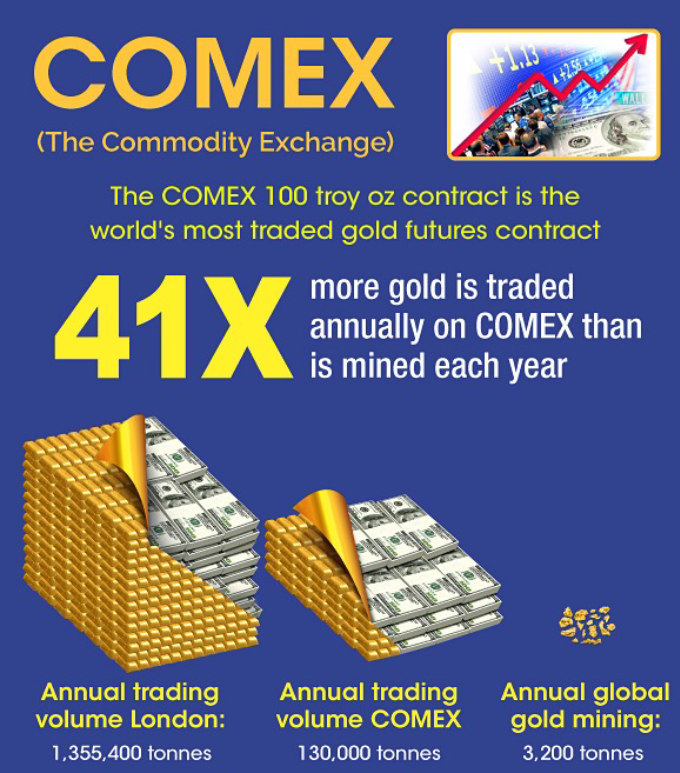
What is Paper Gold?
As touched upon in the previous section, “paper” gold refers to contracts or claims on gold that are traded in various venues as opposed ownership of physical gold. Other terms for paper gold are synthetic gold or screen gold (a reference to the fact that most of the trading of that gold occurs via computer screens and is of a very different nature than physical gold).
Some examples of paper gold are futures, options, forwards, swaps, and exchange-traded funds (ETFs). In general, paper gold products are intended to track the price of gold without needing to physically hold, ship, or take delivery of that gold. Paper gold products are most often settled in cash with no physical delivery whatsoever. The lion’s share of paper gold trading occurs on the New York COMEX futures market and in the London gold market.

Unlike physical gold, paper gold is most often used to speculate on the price of gold over relatively short time periods. Unfortunately, the explosion of outstanding paper gold products has encouraged many market participants to take a short-term approach to gold as opposed to the longer-term approach that was more common when the gold market was dominated by physical trading. In addition, the total value of paper gold dwarfs the total value of physical gold, which sets the stage for a crisis in which holders of paper gold are forced to scramble for physical gold collateral only to find out how scarce it really is. In that scenario, physical gold will soar in value while paper gold sinks.
What Are Numismatic Coins?
Numismatic coins are coins that have a higher value in the marketplace due to their collectability or rarity. Numismatic coins are priced at a premium over the value of the precious metal contained in the coin. There are a number of different reasons why coins have numismatic value including limited mintage, minting errors, historic value, special privy marks, and being made from alternative metals during wartime.
Bullion coins, on the other hand, derive their value primarily from the underlying precious metals used to make them and typically have little collectability premium. Investors who are interested in buying coins for possible precious metals price appreciation are better off investing in ordinary bullion coins rather than numismatic coins because bullion coins allow you to get more precious metal for the same amount of money.
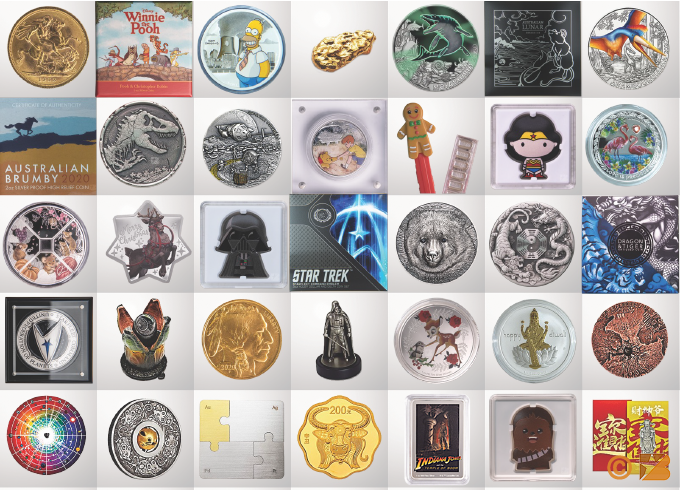
Is the Gold & Silver Market Rigged?
Many experienced precious metals analysts and investors — including the founders of BullionStar — have asserted throughout the years that gold and silver prices are manipulated. There is significant evidence that central banks and investment banks regularly intervene in the gold market, and investment banks and their traders have been fined by regulatory authorities for doing so. Groups of precious metals investors have also initiated successful class action lawsuits against investment banks for their manipulation of pricing benchmarks such as the London Gold and Silver fixings.
The purported reason for precious metals manipulation is to stabilize prices or smoothen price movements, but the net effect is the suppression of gold and silver prices. Central banks, governments, and colluding investment banks have an incentive to keep precious metals prices low because surging gold and silver prices would send a message that fiat or paper currencies are rapidly losing value or are failing altogether. We believe that the parties that are manipulating precious metals prices will lose control of the market in the not-too-distant future and that more fair price discovery will prevail, resulting in much higher gold and silver prices. We invest in physical gold and silver bullion with that eventuality in mind.







